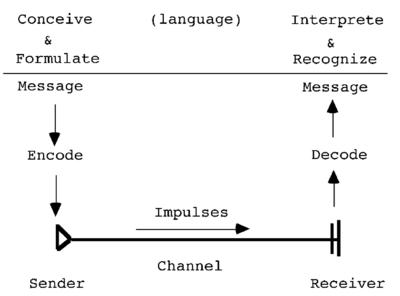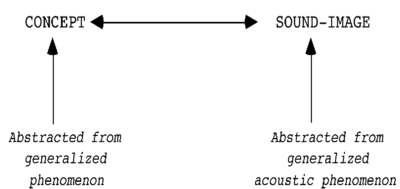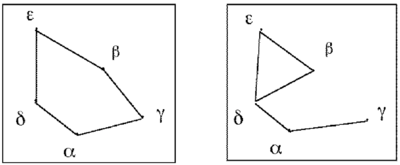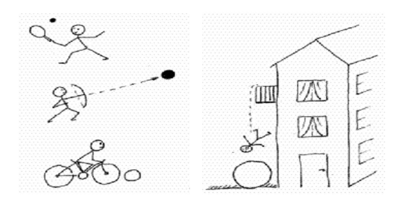Text:How Do We Mean A Constructivist Sketch of Semantics
Cybernetics and Human Knowing, 6(1), 9–16, 1999. 221
How Do We Mean? A Constructivist Sketch of Semantics
When people ask about the meaning of life, they have to be given a metaphysical answer. Whether the answer will seem plausible or not, depends on their mindset. It cannot be checked in the domain of experience because the question explicitly leads beyond that domain.
Questions about language and how words come to have meaning, are of a different sort and they deserve an answer that speakers of a language can check out by reviewing their own early experience of constructing meanings for the speech sounds they learned to hear and to produce.
The domains of metaphysics and semantics are essentially different in my view. Different, too, is the way most people come to think of them, if they think of them at all. Many of us reflected at least briefly (and inconclusively) about the meaning of life when we reached puberty and wondered who we were and what the world was about. And we may later have returned to these questions in times of crisis. In contrast, very few people, have spontaneously come to examine the general problem of meaning in language. This may be due to the fact that by the time metaphysical problems raise their head, we are already so thoroughly familiar with the use of language as a tool in everyday interactions that “communication” has become a commonplace and we take for granted that it works. This may be one reason why many accept the notion that language has some form of ‘existence’ apart from the people who use it.
At a time that is more and more often referred to as the ‘information age’, an examination of the assumption that language is the main carrier of information, does not seem out of place. Some fifty years ago, Claude Shannon published the first ‘scientific’ Theory of Communication (1948). It may have been superseded by more sophisticated methods of calculation in radiotelegraphy and satellite linkages, but it formulated a logical condition that is as relevant in today’s communicatory interactions as it was then. The following diagram shows some aspects of the theory:
Fig.1: Communication (after Shannon, 1948)
What travels in the communication channel from sender to receiver are impulses, that is to say, changes in some form of energy (kinetic, electromagnetic, acoustic, etc.).
These impulses are signals insofar as they can be identified as belonging to a code. They do not carry meaning in themselves. Both the sender and the receiver attribute to them the meanings associated with them in a list that constitutes the code. Needless to say, “communication” can take place only if the code list is essentially the same at both ends of the channel. This is no problem in systems that employ technical codes – such as the one invented by Mr. Morse – because these codes are distributed to the participants before they begin to communicate.
In Shannon’s model, the “message” is simply the succession of decoded signals. How the receiver converts these into meaningful conceptual structures lies altogether outside his theory. This is why I have added the level of language. It is this second level of interpretation that I intend to discuss here.
Children are not given a linguistic code in order to speak and understand language – they have to discover it on their own. They have to construct for themselves the meanings of a good many words before words can be used to expand the range of their linguistic communications. I have elsewhere given a detailed account of how one might think of this development (Glasersfeld, 1995,ch.7). Here it will be sufficient to point out that the linguistic code necessarily consists of associations made in the subject’s experiential field. De Saussure has provided a simple diagram that shows the structure of the linguistic code:
Fig.2: Linguistic Sign (after de Saussure (1958/1916)
Whatever one assumes to be genetically determined in children, it is they themselves who must actively isolate units in their experiential field and abstract them into concepts. Having done this, they must separate in their auditory experience those acoustic units that belong to a linguistic system from other units that do not. Only then can they tentatively associate specific items of the first type (concepts) with items of the second (sound-images of words). That children do all this unawares does not support the notion that it happens by itself without any effort on their part. The semantic connection has to be formed in their heads.
Many authors, e.g. Rorty (1982) and Gergen (1994), suggest that whatever we want to think of as ‘meaning’ is acquired in the course of what Wittgenstein (1953) called “language games”. This rightly points to the fact that children cannot guess all by themselves which sounds constitute words and what their meanings might be. It can only be done in the contexts of social interaction. Language games are the occasion for the construction of meaning, But they do not explain how children do it. Social Constructionists (a term invented by Kenneth Gergen to distinguish his way of thinking from that of other constructivists) are obviously aware of the problem. Gergen explicitly states: “the constructionist is centrally concerned with such matters as negotiation, cooperation, conflict, rhetoric, ritual, roles, social scenarios, and the like, but avoids psychological explanations of microsocial process” (Gergen, 1994; p.25).
Piaget’s constructivism, and my slight elaborations of it, have the explicit purpose of proposing models to show how children may come to develop knowledge and thus the meanings of words and linguistic expressions. I see no reason why this enterprise should be considered antagonistic to those who investigate negotiation, cooperation, and other social phenomena. Such a psychogenetic model, it seems to me, could help the socially oriented researchers to ground their findings far more solidly than by assuming that the knowledge and the language of a social group could be instilled into its members through the simple occurrence of language games and other forms of social interaction.
Be this as it may, my main interest is in devising theoretical principles that might show at least one way that could lead to these important competencies. De Saussure’s model makes very clear that the semantic connection in the first place links an individual’s generalized experience of words with the individual’s generalized experience of other items. For entities that have been generalized German provides the word “Vorstellung”, a word that is central in Kant’s analysis of reason. In English, it has traditionally been rendered by “representation”, and this was thoroughly misleading. In the English-speaker the word “representation” inevitably implies that somewhere there is an original which is now being represented. This interpretation makes it practically impossible to understand Kant’s theory of knowledge; and when it is applied to language it leads to the notion of “reference”, i.e. that words refer to objects in a world thought to be independent of the speakers.
If you think about this, you sooner or later stumble over the question how you could possibly have established a semantic connection between a word and an object, if both are supposed to be independent of your experience. The answer becomes obvious in Saussure’s diagram: The semantic connection – one cannot repeat this often enough – can be made only between entities in someone’s head. Just as, for instance, the Morse code links short and long experiences of beeps to re-presentations of letters of the alphabet, so in language, sound images are linked to concepts, that is, to re-presentations of experiential units.
The problem of meaning thus comes down to the problem of how we generate units in our experience such that we can associate them with words, and how we relate these units to form larger conceptual structures. A model to illustrate these generative operations was first suggested by the late Silvio Ceccato in the 1950s (Ceccato, 1966; p.22-26) and later developed in slightly different directions by Giuseppe Vaccarino (1977, 1988) and myself (1981). It was based on a novel conception of the mechanism of attention. Instead of thinking of attention as a kind of searchlight that illuminates parts of the experiential field, we think of it as a pulse whose beats could either coincide with sensory signals or remain empty and unfocused. Its operation can be illustrated with the help of the following design:
Fig.3: Occasion for Diverse Categorizations.
The path of the beholder’s attention determines what is seen.
This can be seen as different ‘things’: If an uninterrupted sequence of attentional pulses coincides with sensory signals of blackness, it will be categorized as a line; if attentional pulses fall on the crests and on the white background between them, it will be categorized as three hills; if they fall alternatingly on black spots and the whiteness between them, it will be categorized as a collection of dots. The design itself does not determine what “units” are to be used in the categorization you choose. It depends on your way of operating.
Ceccato’s Idea of attentional pulses was, one might say an inspired intuition, for at the time he knew nothing about alpha rhythm or other oscillatory phenomena in the brain. Only twenty years later a review of “two hypotheses of central intermittency in perception” was published that surveyed research on what became known as “perceptual framing” (Harter, 1967).
This essay is not the place to go into the details of the attentional theory. Besides, I want to make clear that, from a constructivist point of view, neurophysiological findings cannot confirm, let alone “prove” theoretical assumptions; but theoreticians quite rightly feel encouraged when their conceptualizations turn out to be useful in the organization of observational (empirical) data.
The point I want to stress is that from our perspective it is attention and above all its movements that generate the conceptual structures and thus the things we talk about. These items, as I said before, cannot have an existence of their own but originate through the operations of an experiencer or observer. A striking example are the constellations we all can learn to see, name, and recognize on a clear night. Take the one called Cassiopeia. It has been known since the beginning human history. The Greeks saw it as the crown of a mythical queen and gave it her name. We see it more prosaically as a “W” in the vicinity of the Polar Star.
Fig.4: The Constellation of Cassiopeia
If you consider the relative distances of the individual stars it becomes clear that there is only a very small area of the universe (as astronomers have taught us to conceive it) from which the five stars could be said to form a double-u. Move the observer a few light-years to the right or the left, the double-u would disappear. Move the observer 50 light-years forward, and he or she could construct only a triangle with the three stars that remained in front. One might call this the relativity of the point of view. But there is also the relativity of construction. The connections between the five stars are not in the sky. They have to be imagined by the observer – and there is nothing in the sensory material that imposes the formation of a double-u. The stars could equally well be connected differently:
Fig.5: Alternative Constructs
The Greeks called it a crown because this was a generally accessible analogy in their world. The double-u of our alphabet supplied an analogy that was more easily accessible to us. The point I want to make is that it is the experiencer who generates the image, the configuration that becomes the “representation”, and that this configuration is always one of several others that are equally possible within the constraints of the sensory material. This, I claim, goes for all the experiential units or things to which we give names, and it is the reason why I maintain that meanings are always subjective. They are subjective in the sense that they have to be constructed by the experiencer. This in no way denies the fact that the continuous social and linguistic interactions among the members of a group or society lead to a progressive mutual adaptation of the individuals’ semantic connections. These interactions inevitably bring about the fact that the members of a language group tend to construct the meanings of words in ways that prove compatible with the usage of the community. This is to say, they develop a more or less common way of “seeing the world”. But what they see is nevertheless their subjective construction.
That this is a viable assumption becomes clear the moment one considers more than one language. I can illustrate this by a simple example. English text books of linguistics frequently give “the boy hit the ball” as example of a simple sentence that contains a subject, a verb, and an object. In the British Isles this sentence usually calls forth the re-presentation of a boy armed with a tennis racket or a golf club. In the United States he will be imagined to hold a baseball bat. This is a very minor difference. However, if the sentence has to be translated into German, it turns out to be far more complicated. The translator has to know more about the situational context, because the “simple” sentence turns out to be ambiguous. It would be appropriate in several situations, each of which requires different words in German.
Here are the four most likely ones:
Fig.6: “The boy hits the ball”
If the boy hits the ball with a racket, a club, or a bat, the German verb has to be schlagen; if he hits it with an arrow or a bullet, it would be treffen; if he hits it with his bicycle, it would be stossen plus the preposition auf; and if he hits the ball when falling from the balcony, it would be fallen … auf or schlagen … auf. None of these verbs could be used in any of the other three situations.
The conceptual structures called up by the German verbs are more complex than the one called up by “to hit”. They all contain the meaning of the English verb, i.e. the construct of an object’s sudden impact with something else; but they also contain specifications of the event that are not part of the English meaning. As a result, English-speakers who want to express themselves in German must learn not only different words but also a different way of seeing the details of the relevant experiences.
Between any two languages you might choose, there are innumerable differences of conceptualization. If they lie in the area of perceptual or sensorimotor construction, they sooner or later become noticeable and corrigible in practical situations of interaction. If, however, they are a matter of abstract conceptual construction, such as the meaning of the German word Vorstellung and that of the English word “representation”, they may cause lasting misinterpretation because their incompatibility rarely becomes apparent on the surface.
I have chosen examples of the differential construction of meaning in different languages because they manifest themselves in the daily experience of anyone who lives in more than one language. But the meanings individual users of one and the same language construct are no more homogeneous. Although individuals necessarily adapt the meanings they associate with words to what they perceive to be the usage of the community, the stuff those meanings consist of is always part of their own subjective experience. Consequently it is misleading to speak of “shared” meanings. The four terms I mentioned in the abstract involve meaning in one way or another and tend to reinforce the notion that its structure is a well-known fixed entity. This, in my view, inevitably leads to trouble. What speakers of a language have constructed as the meanings of the words they use, is at best compatible in the linguistic interactions with other speakers; but such compatibility remains forever relative to the limited number of actual interactions the individual has had in his or her past. What speakers have learned to mean always remains their own construction.
Bibliography
Ceccato, S. (1966) Un tecnico fra i filosofi (Vol.2). Padua: Marsilio.
Gergen, K. (1994), Social construction and the educational process, in L.P.Steffe & J.Gale (Eds.) Constructivism in education. Hillsdale, N.J.: Lawrence Erlbaum.
Glasersfeld, E.von (1981) An attentional model for the conceptual construction of units and number, Journal for Research in Mathematics Education, 12 (2), 83-94; reprinted as appendix in Steffe, Glasersfeld, Richards, & Cobb, Children’s counting types, New York: Praeger, 1983.
Glasersfeld, E.von (1995) Radical constructivism: A way of knowing and learning. London: Falmer Press; ch.7.
Harter, M.R. (1967) Excitability cycles and cortical scanning: A review of two hypotheses of centrasl intermittency in perception, Psychological Bulletin, 68, 4758.
Rorty, R. (1982) Consequences of pragmatism. Minneapolis: University of Minnesota Press.
Saussure, F.de (1959) Course on general Linguistics. New York: Philosophical Library. (French original, 1916.)
Shannon, C.(1948) The mathematical theory of communication, Bell Systems Technical Journal,27, 379-423 and 623-654.
Vaccarino, G. (1977) La chimica della mente. Messina: Carbone.
Vaccarino, G. (1988) Scienza e samantica costruttivista. Milan: Metope/CLUP. Wittgenstein, L. (1953) Philosophical investigations. Oxford: Blackwell.





